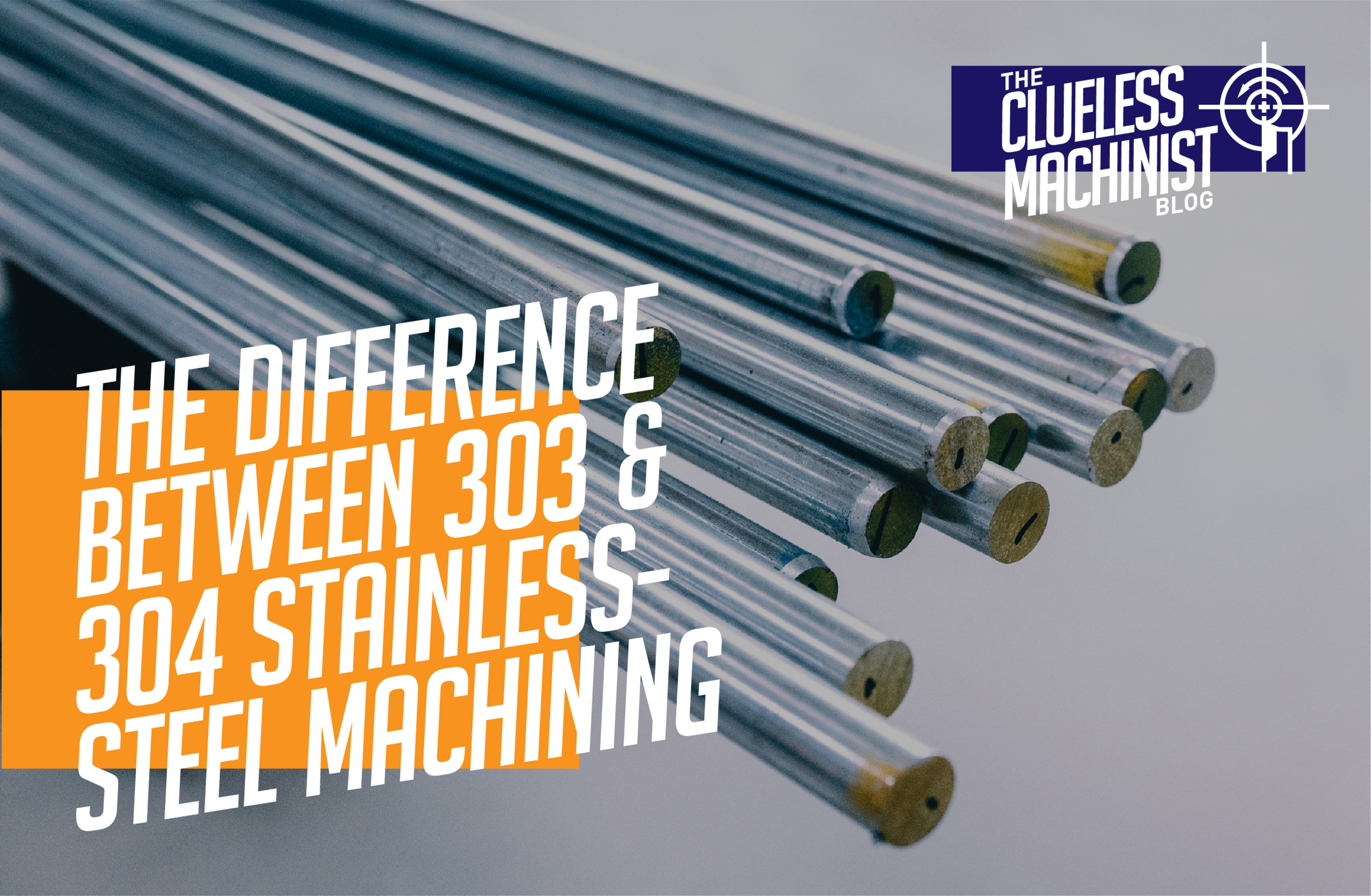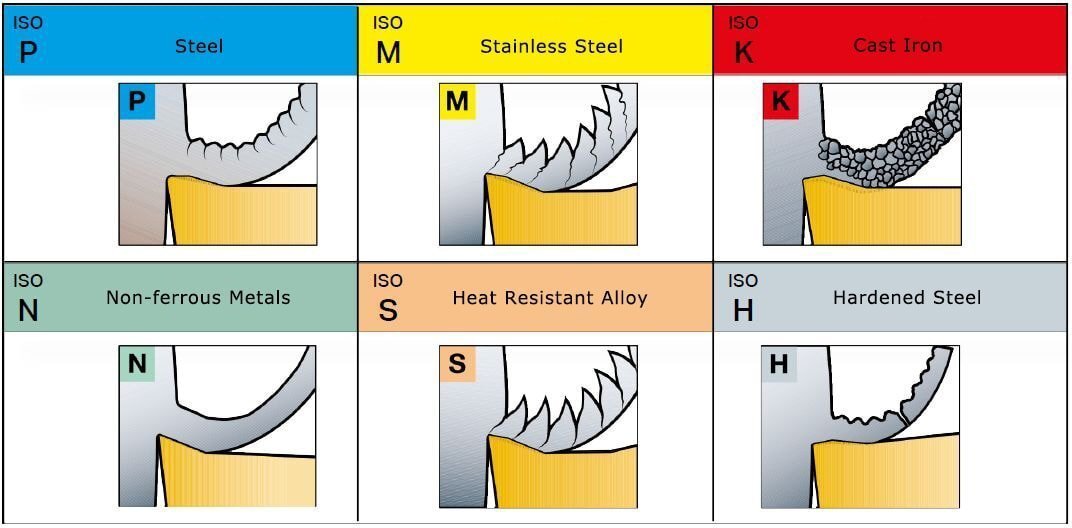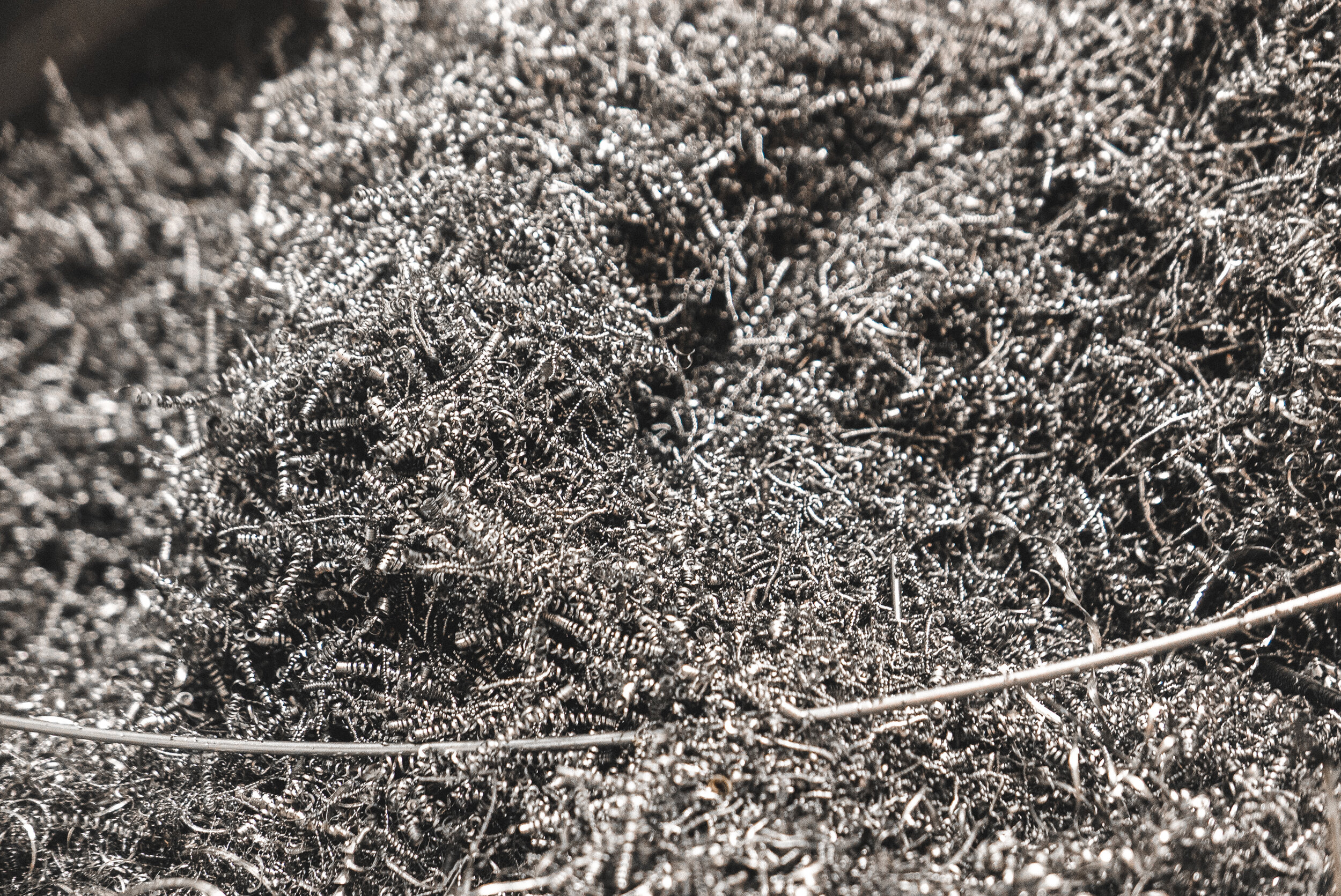Material selection is vital for cost-effective machining on Swiss-type lathes. How do most common stainless steel Type 304 and its modified version Type 303 alloy compare for machinability and other properties?
To produce the top quality machined parts, we need to consider several different factors influencing the machining process. The consideration starts with
The selection of the most suitable machine for the job, selection of the right tooling for the job
The most suitable material.
And finally, the post-treatment technique.
In this article, we focus on the details regarding the material selection for the machining job.
For a wide variety of machining applications, the stainless steel is a material of choice. Besides its advantageous mechanical and chemical properties, stainless steel comes in many different alloys that fit nearly any use.
Source: https://www.machinemfg.com/metal-cutting-difference/
We most commonly use the austenitic type of stainless steel alloys for machining parts on the Swiss-type lathes. Austenitic stainless steel contains chromium, nickel, and manganese as its principal alloying elements. The most widely used alloy in this group of stainless steel is Type 304, also known as the 18-8 stainless steel. Despite its many advantages, Type 304 stainless steel has difficult machining characteristics, due to its inclination to work harden at a very rapid rate. To increase its machinability, material scientists have modified Type 304 by adding sulfur or selenium. The resulting stainless steel is Type 303. The material composition of Type 303 has slightly altered other characteristics as well. Let's take a closer look at what are the differences between 304 and 303 stainless steel?
Physical and Mechanical Properties
Most of the physical properties, such as density, modulus of elasticity, specific electrical resistance, specific heat, thermal conductivity, thermal expansion, magnetic permeability, and annealing temperature of both Type 304 and Type 303 stainless steel are the same. Mechanical properties slightly differ. Type 303 has somewhat higher tensile strength when compared to the Type 304, but has lower yield strength and elongation capacity.
Chemical Properties
The main difference between chemical compositions of Type 304 and Type 303 is the addition of Sulphur to the later. Next to the added Sulphur, Type 303 has a significantly increased amount of Phosphorus. Type 303Se version contains Selenium. Nevertheless, the production of 303Se is rare nowadays.
Stainless steel alloys such as Type 303UX and Type 304Cu additionally contain Copper in their chemical composition. Copper reduces work hardening and permeability, provides corrosion resistance, and increases the machinability of the alloy.
Machinability
Long, stringy chip of 303s in our shopfloor
When compared to other materials such as Aluminium or Low-Carbon Steel, Stainless Steel is more difficult to machine. It tends to produce long and stringy chips leading to the built-up edge on the tool. The reasons behind the differences in the machining of stainless steel lay in the following properties; high tensile strength, the large spread between yield strength and ultimate tensile strength; high ductility and toughness; high work-hardening rate; and, low thermal conductivity.
Despite its properties and different behaviour, stainless steel is machinable using proper technique. Namely, Stainless Steel requires more power, lower cutting speeds, only positive feed, rigid tooling and fixtures, utilisation of chip breakers or curlers, and excellent lubrication and cooling during machining.
Chip-breakers of different geometry perform differently at different speeds and feeds.
Source: https://www.kyocera-unimerco.com/
Among many alloys of stainless steel, some are more machinable than others. The more machinable family of stainless steel alloys is called the free-machining alloys. Type 303 is the most common member of this family. Free-machining alloys contain additional material composition elements such as Sulphur, Selenium, Lead, Copper, Aluminium, and Phosphorus. Free-machining alloys produce less friction and less material accumulation when in contact with the machining tool. Additionally, chips break off easily during the machining.
Type 303 Stainless Steel has improved machinability over Type 304, which is a non-free-machining type. On the other hand, Type 304 stainless steel weldability is higher when compared to Type 303.
Corrosion Resistance
All of the austenitic stainless steel types have excellent corrosion resistance. Differences in the chemical composition of alloys cause the differences in corrosion resistance. Type 303 stainless steel has decreased corrosion resistance when compared to Type 304, due to the addition of Sulphur and phosphorus.
Type 303 resists corrosion from all atmospheric sources, steriliSers, organic chemicals, and dyes. They resist the nitric acid well, Sulphuric acid moderately and halogen acid poorly. For optimal corrosion resistance, all parts made of Type 303 Stainless Steel should be cleaned and passivated after the machining to remove grease, oil, fingerprints, and other foreign particles such as leftover Iron particles from tooling.
Applications
304 shaft for medical device
Due to its increased machinability, we use Type 303 stainless steel to make parts that need heavy machining. The most common applications of Type 303 are machining of screws, nuts and bolts, aircraft fittings, gears, bushings, electrical components, valve bodies, shafting, and valves.
Type 304, being one of the most popular stainless steel alloys, is used to make kitchen appliances, food or liquid processing equipment, construction materials, marine equipment, chemical containers, automotive parts architectural trims, and heat exchangers.
Due to its high corrosion resistance and low carbon content, Type 304 stainless steel is a material of choice for medical equipment. Type 304 does not chemically react with bodily tissues and sterilising solutions. It can withstand hard and repetitive wear, usually associated with medical use.
Machinability is a significant property of steel alloys. However, in highly corrosive environments and underwater applications, corrosion resistance is the primary concern. Type 316 has one of the highest corrosion resistance among the stainless steel alloys. Type 316 is very similar to Type 304, but it has an increased amount of molybdenum that provides high corrosion resistance. Type 316 is an alloy of choice for orthopaedic implants and artificial heart valves.
Conclusion
There are a wide variety of stainless steel alloys. Even though the majority of stainless steel material in the world is Type 304, it has low machinability property. Many applications that put the focus on the machinability of the materials employ Type 303 stainless steel. Type 303 also has desirable non-galling properties. Galling is a form of wear caused by adhesion between sliding surfaces. This property makes the disassembly of parts easy.
Type 303 stainless steel has high machinability, chips break off easily, and machining rates of this stainless steel reach up to 40 surface meters per minute.
Type 303 is a material of choice for Swiss-type lathe turning. The choice of material affects the ratio of machinability to cost. In our experience, the cheapest material does not always yield a lower cost. We cover this topic in the blog article on "the true cost of quality." Materials that have low machinability require frequent tool change, have increased downtime, and poor surface finish. One rule of thumb applies to the machining of stainless steel, as the machinability decreases the associated machining costs increase.
We at Turntech Precision leverage our knowledge and experience to deliver the best and the most cost-effective Swiss-type lathe machined parts to our customers. We utilize the advantages of our machines and proper material selection, to produce top-quality parts for many different industries. Contact us today with your inquiries.





